

My adventures at Forbes Travel Guide Five-Star Montage Los Cabos begin in Santa Maria Bay, about 200 feet from the shoreline, when divemaster John Montoya flashes a thumbs-down signal to descend. We fin toward the depths, where schools of baitfish veer along invisible freeways, and a panorama of reef life, including sea fans, urchins and puffer fish, begins to unfold.
My brain struggles to reconcile my new surroundings with how close we are to the resort. A grouper lurks inside a canyon. Bright blue-and-pink parrotfish audibly chomp at the hard coral. A small ray lies hidden below, partially covered in sand. We continue deeper. Montoya shines his flashlight on a rock crevice, where a moray eel stares back, mouth agape. Later, Montoya points out a ray whose wings must span seven feet.
I’m marveling at the sights, but what blows my mind is how easy this has been. I only landed at San José del Cabo International Airport a few hours ago, and the process of gearing up and walking into the water was nearly as effortless as if I’d gone for a simple swim.
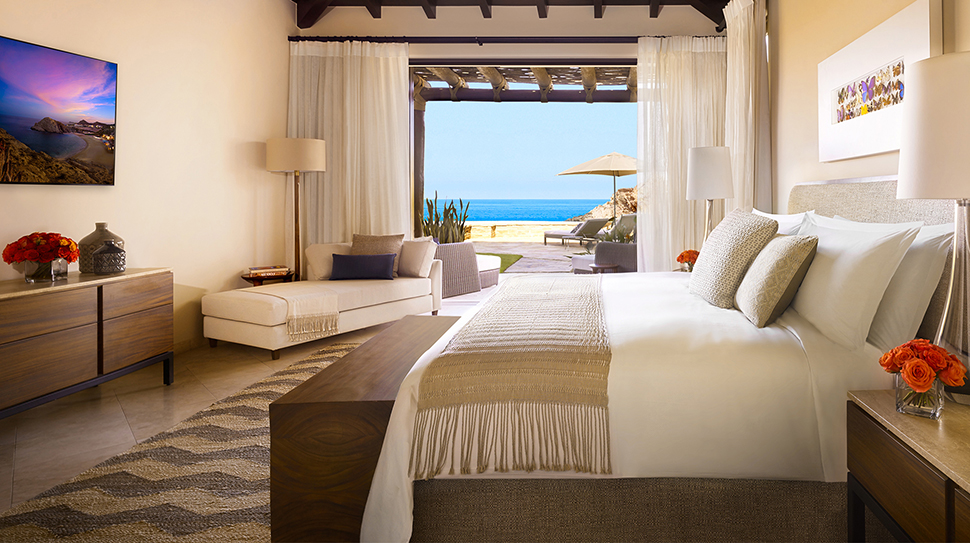
While most visitors to Montage Los Cabos will understandably spend their vacations relaxing in the chic, ultra-luxe accommodations, experiencing the Five-Star spa or exploring the town, the hotel has been seeing changes to itineraries. “People used to come here just to party for spring break, but now they’re looking for adventure,” says Manuel Lopez, one of the adventure guides.
Compass Sports, Montage’s in-house adventures outfitter, streamlines all of the resort’s excursions. So, after checking in and enjoying a campechana seafood cocktail on the bluff at Marea, I strolled down to the watersports center on the beach. Here, Montoya led me through a safety briefing and quick refresher course, assuring me that, “Diving is just like riding a bike.”
Now, at a depth of 30 feet, his guidance serves me well. When I resurface, the sun has already dipped behind the mountains. Montoya checks his diving watch and says, “Forty-eight minutes. That’s really good for your first time in a while.” He beams at me with eyes of a proud teacher, and I feel like a kid who just earned an A on his big test.
It’s an auspicious beginning. Dinner at Mezcal, the resort’s signature contemporary Mexican restaurant, is icing on the cake, as I feast on 16-hour-braised suckling pig, lamb birria and a decadent tres leches de chocolate served with verbena mousse and black pepper ice cream.
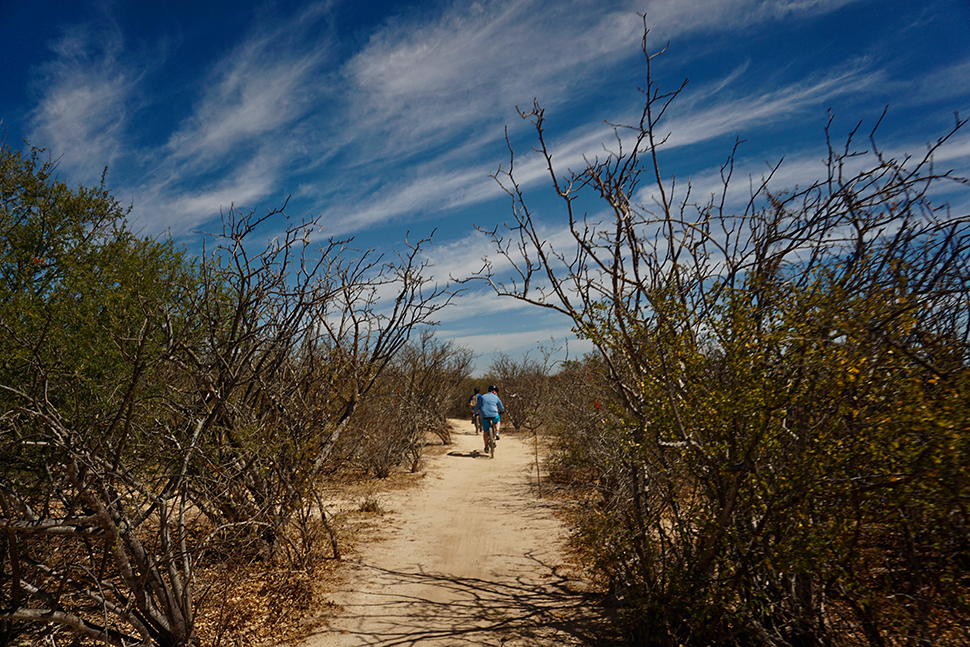
The next day, I indulge in a veritable tasting menu of activities. By 10 a.m., when I head out into the desert for the Dos Arroyos Experience, I’ve already spent an hour zooming around Santa Maria Bay on a Seabob (a jet-propelled water sled) and a Flitescooter (an inflatable surfboard that lifts you from the water on a carbon-fiber foil).
The Dos Arroyos Adventure Camp looks like a fortified outpost in a classic Western. But instead of stables, it houses a paintball arena alongside ax-throwing ranges and archery lanes. Outside the main compound, I find about 20 Scott mountain bikes beneath a net canopy. I opt for a pedal-assisted e-bike, and after our guide runs through the basics of the controls and power levels, I set off into the desert.
Though I stick to “green” beginner trails that wind through stands of mesquite and cacti, Dos Arroyos offers choices for every riding level. Advanced runs from the canyon’s rim snake down steeply sloped descents and rise up technical switchbacks. I could have happily spent hours on the 10-mile network, but I savor a short ride before proceeding on foot, hiking down to the dry riverbed and back, stopping to admire massive yellow-flowering saguaro cacti.
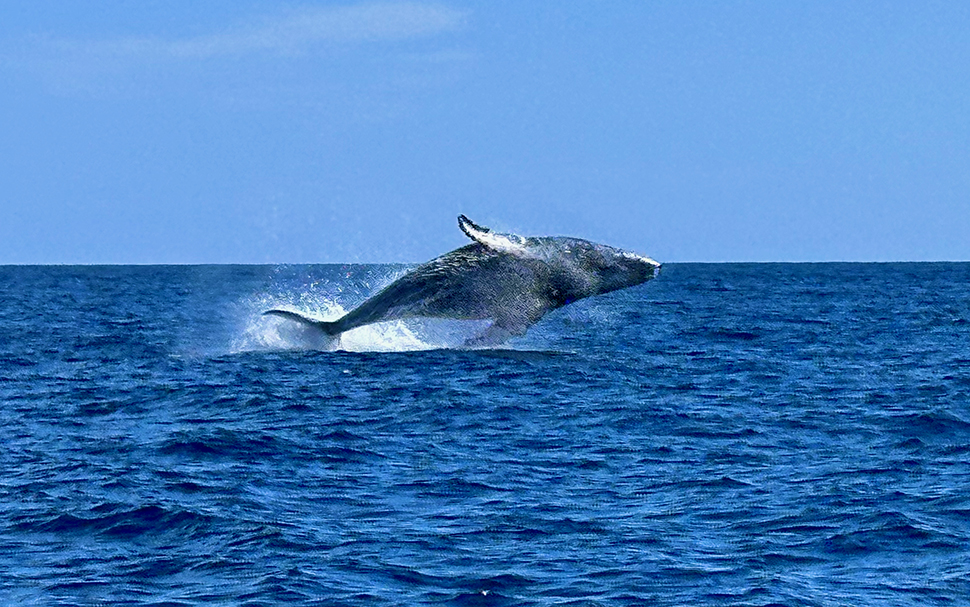
Were Santa Maria Bay and Dos Arroyos the extent of my outdoor experiences, Montage Los Cabos would already have most resorts beat. However, the magic begins farther afield for guests willing to commit more time to exploration.
After lunch, I board the Twin Dolphin, a slate-colored VanDutch 56-foot motor yacht that belongs in a James Bond movie. Sleek and shark-like, the yacht is powerful — the watercraft cruises at 34 knots — and yet, she’s so smooth that a margarita remains still even as the vessel accelerates and leave the protected cove. And I have her all to myself.
As captain Israel Meza sets a southwesterly course down the coastline to El Arco, San Lucas’ iconic rock arch demarcating the transition from the Sea of Cortez to the Pacific Ocean, it’s hard to overstate the beauty of the waters. Because of the desert’s khaki and olive coloration, the shades of blue pop in extraordinary vibrancy. We pass cliffs, rock outcroppings and golden beaches. When a whale spouts and surfaces off our port bow, the spectacle feels especially dramatic. “We’ll find a lot more humpbacks today,” Meza says. “It’s one of the beautiful things we have in Cabo. We’ll get you up close.”
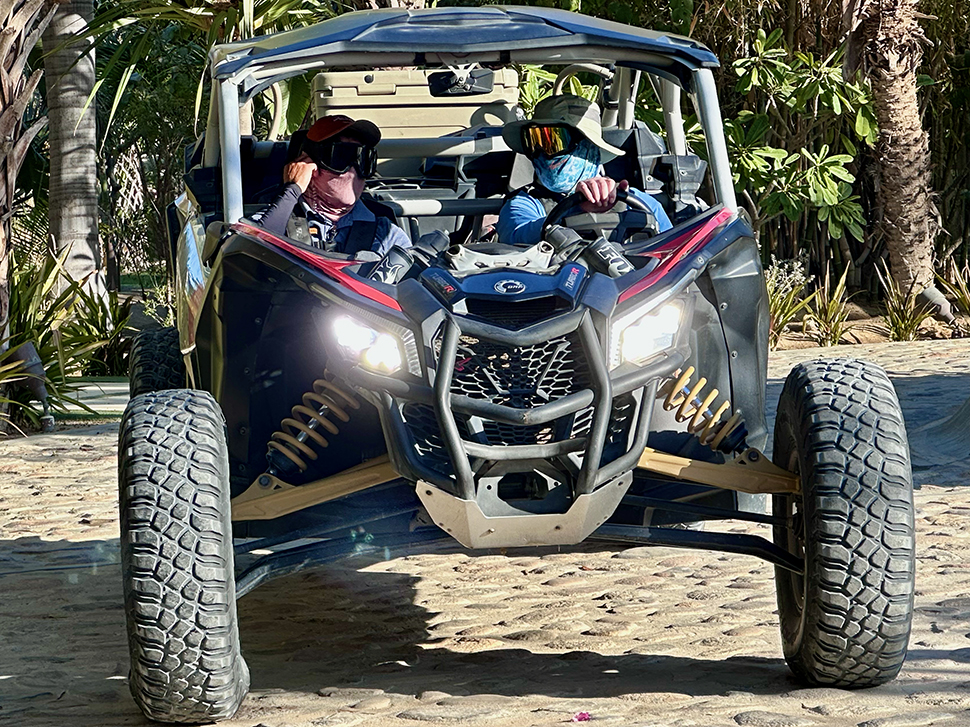
Over the next few hours, the captain’s words prove true as we witness all sorts of humpback behavior, from mothers teaching their calves to dive to solo whales rounding out and flipper slapping. A few others poke their heads up vertically in what’s called spy-hopping. When some of them hit the water with their flukes — sometimes five or 10 times in succession — Meza explains, “They’re dancing. It’s mating season, and the males are in a heat run.” As an exclamation point, a whale launches in a full breach, twists sideways in the air and plunges back beneath the waves.
Over the remainder of my time in Los Cabos, I leave the luxury yacht and embark upon two full-day Montage Expeditions: Canyons and Land & Sea. The former transports me into the heart of Baja’s mountains in Sierra de la Laguna National Park, a UNESCO-designated biosphere. The latter follows dry riverbeds to a coastal mountain road and the beach town of Cabo Pulmo.
I start the days for both adventures early and bomb through the dusty landscape in a Can-Am Maverick desert buggy. It’s my first time driving a UTV, but it’s as easy as a go-kart; its thick tires and massive Fox suspension allow it to glide easily over the rough terrain.

My first Canyons stop is the 40-foot Sol de Mayo waterfall outside of Santiago, where I encounter only one other visitor. Despite the water’s low volume in the dry season, it pours into an exquisite jade pool that’s as refreshing as it is pretty. After swimming and climbing around the rocks, I press on to the next canyon and lunch at Rancho El Refugio, a self-sustaining homestead where the owners grow their fruits and vegetables, raise livestock and make their own leather, using local tree bark for tanning.
At the outdoor kitchen, owner and chef Doña Luz is adjusting mesquite branches in her cook fire, tending three separate pots and making tortillas by hand. When she invites us to try, I slap a few into shape. Doña Luz cooks them on an iron griddle, then piles on steak and cheese. Soon, I’m devouring quesadillas with spicy salsa, traditional beans and rice. For dessert, my host grills up another batch of tortillas that I eat with berries, mango and cactus honey — all from her farm.
While the Canyons Expedition took us inland, Land & Sea focuses on coastal scenery and Cabo Pulmo, the national marine park Jacques Cousteau dubbed “the world’s aquarium.” A vintage Jeep Cherokee launches my dive boat down the rocky beach, and I head out into open waters. “Cabo Pulmo is a true ecological success story,” divemaster Dael Velazquez says. “Local fishermen saw the fish populations declining in the 1980s and realized they could make a better income through conservation and sustainable tourism.” Today, its reefs are among the oceans’ healthiest, and a 2011 Scripps Institute study called it “the world’s most robust marine reserve.”
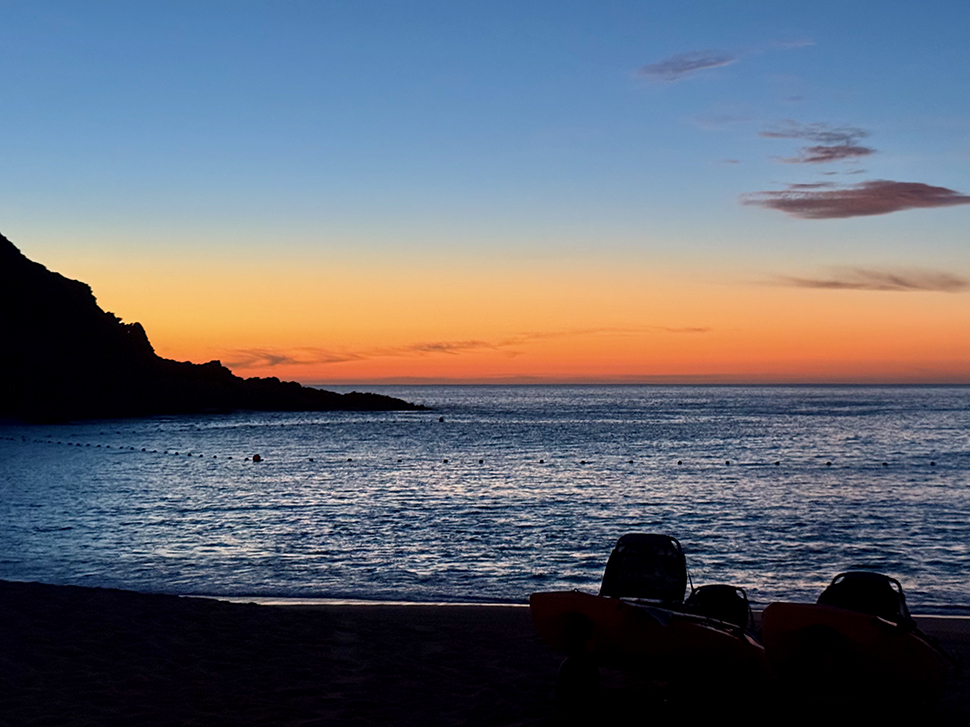
I snorkel above coral with abundant varieties of fish, around rocks patrolled by sea lions and within a vortex of amberjack — hundreds of them, each as long as my arm. On the return, I follow more than a dozen black-tipped sharks from the boat, watching them feed in the shallows and surf.
Regardless of how far you may roam with Compass, a visit here is incomplete without a sunrise kayak. “It’s a guest favorite,” Montage Expeditions coordinator Carolina Rosales says. “You don’t want to miss it.” As I paddle out from Santa Maria Bay in the predawn twilight, it’s easy to see why. The Sea of Cortez lies quiet, with only the slightest waves rolling beneath us. Aside from our kayaks, the only sounds are the calls of seabirds. The sun breaks bright orange in the cloudless sky, and we drift in awe. When a nearby whale rounds into a high-fluking dive, its full tail glistening in the dawn sun and waving farewell.
